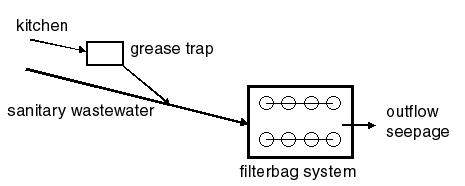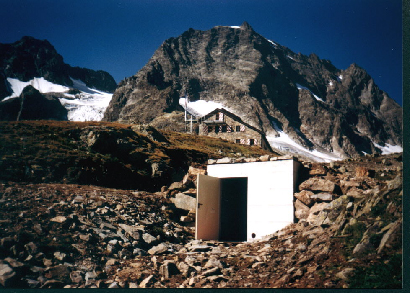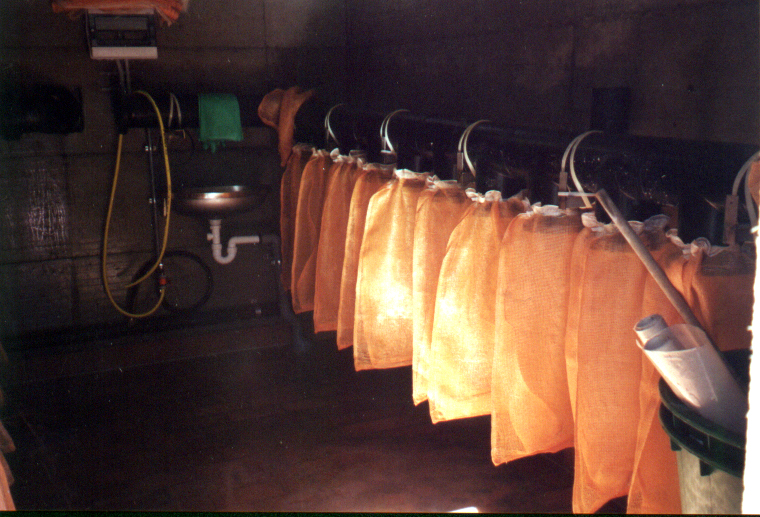environmental benefit of wastewater treatment plants in mountainous areas in the alps

|
Comparison of technology, costs and environmental benefit of wastewater treatment plants in mountainous areas in the alps |

|
Site description and boundary conditions
Design and treatment efficiency
maximum daily organic load [PE]
75 maximum hydraulic load [m3/d]
5.3
annual organic load [kg BOD/a]
220
altitude [m a.s.l.]
2384
sensitivity [hydrogeology, protected area ...]
granite
lagal requirements [BOD elimination]
40 %
operation period [season]
summer
energy supply [type, kW]
water power plant, 12
means of transport [type]
4WD
existing WWTP [type, condition, volume l/PE]
3-chambers, poor condition, 93

Fig. 4.11: Flow scheme of the WWTP Darmstadt Refuge

Fig. 4.12: View of the building with the filterbag system and with the Darmstadt Refuge in the background.

Fig. 4.13: One of the two filterbag lines.
Loading
WWTP Darmstadt Refuge seasonal average max. week max. day loading [PE60] 40 65 75 BOD 5-load [kg/d] 2.4 3.9 4.5 influent flow Q [m3/d] 2.9 4.6 5.3
Design of the composting process
Mtotal, wet = 3.700 l (g) / PE60 x 0,15 l (kg) / PE60 = ca. 555 l (kg)/a (wet filterbag sludge)
ca. 45 l (kg) per filterbag wet: ca. 12 filterbags / year required
Energy demand
No energy demand !
Treatment efficiency
date
[dd.mm.yyyy]
CODeffluent [mg/l] NH4 -Neffluent [mg/l] NO3 -Neffluent [mg/l] CODelimination [%] Nelimination [%] load
[% v. PEmax ]11./12.08.2000 900 44 1.4 41 10 52